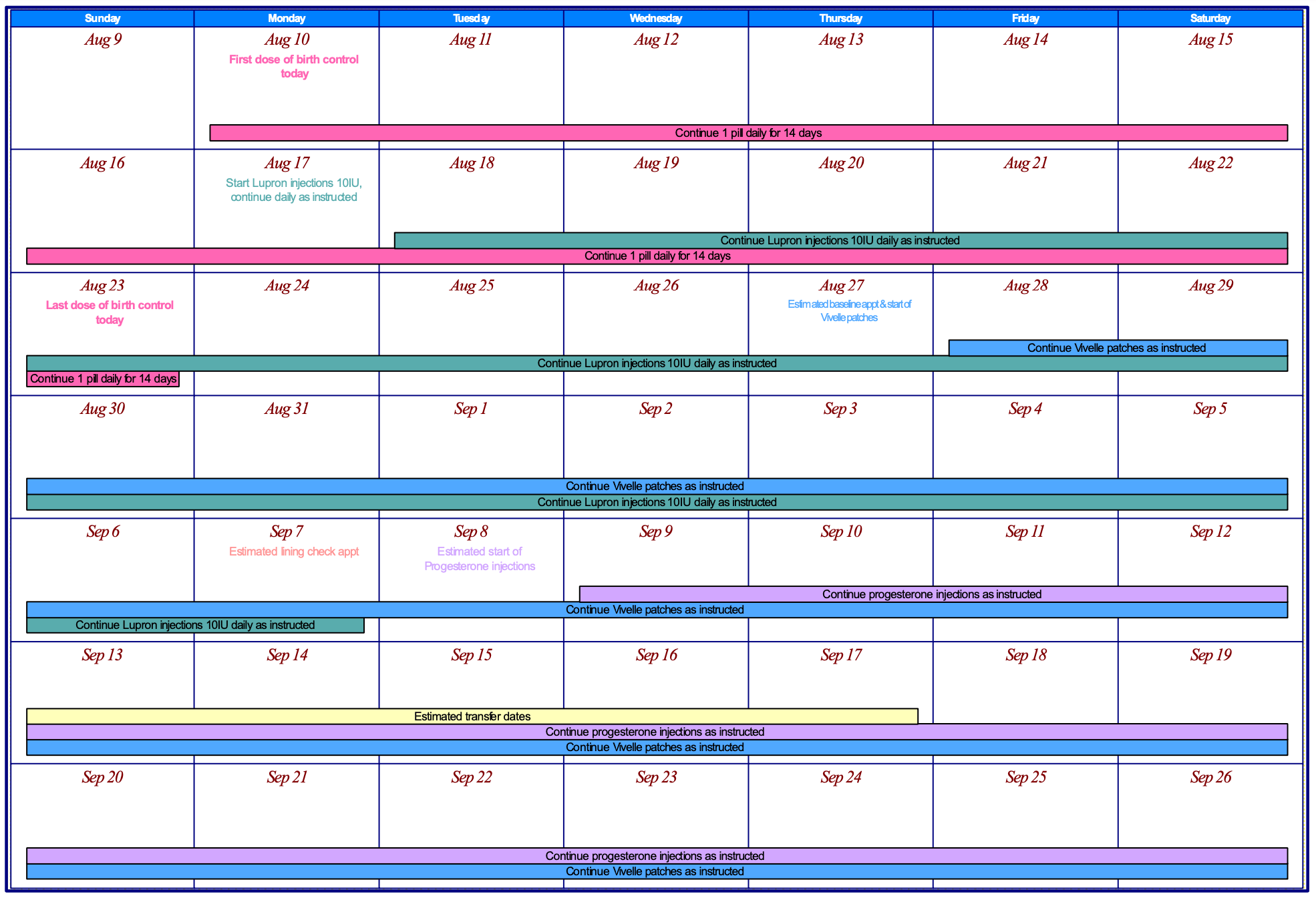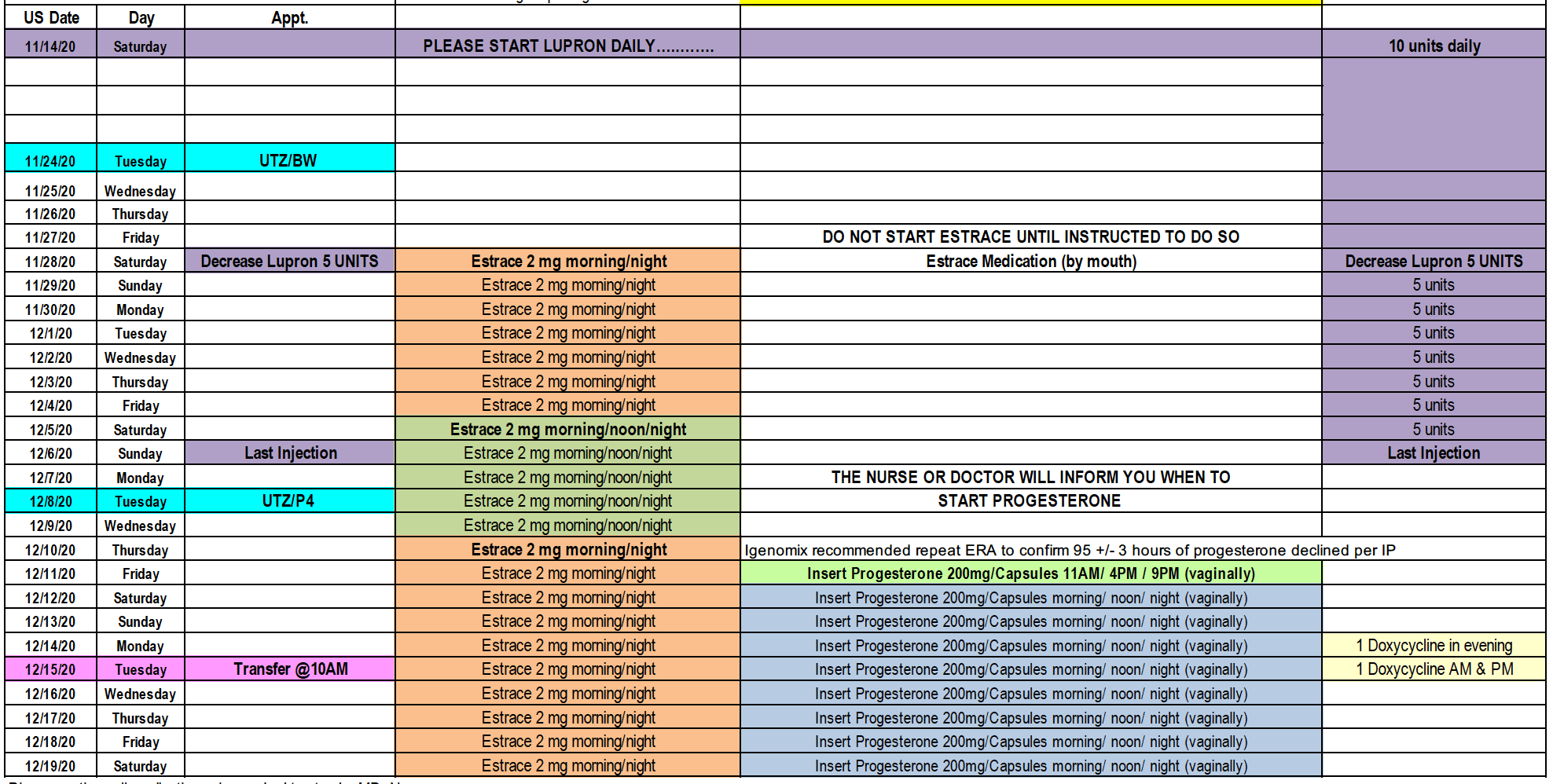Understanding your Transfer Calendar

Waiting for the arrival of your IVF transfer calendar is an exciting process. It’s the culmination of weeks, sometimes months, of medical and legal screenings and is, ultimately, the moment when the timeline is drawn up leading to the date of the embryo transfer. Also known as a Fetal Embryo Transfer (FET) calendar, it outlines what medications you will be taking and what day the targeted transfer will take place.
The FET calendar keeps all of this information in one place so that you, your intended parents, and your agency can all keep track of important dates in the timeline. Every clinic’s calendar may look a bit different—with some in literal calendar form and others as simply a list of dates.
Here’s a look at what the calendar typically includes:
- Daily medication protocol to prepare the body for transfer
- Lining check and/or other monitoring appointments
- The date the embryo transfer will take place
- The date that a pregnancy test can be performed
How Your Transfer is Scheduled:
Before structuring your FET calendar, you must have all medical and psychological evaluations completed, all legal paperwork needs to be finalized, and funding should be in place. Once all of the medical, legal, and logistical details have been cleared and executed, your FET calendar will be carefully created around your menstrual cycle.
Your IVF specialist will work forward from the first day of your last cycle—which generally happens within 5 days of stopping your oral birth control. The transfer will be scheduled after approximately 3 weeks of scheduled medication. You’ll likely be prescribed estrogen to help thicken the uterine lining in preparation. You may also need to take Lupron to prevent ovulation during this time.
After this 3-week period, most surrogates will start taking progesterone—both vaginally and via an intramuscular injection. Progesterone helps stabilize the uterus for transfer and causes the body to produce the tissue necessary for successful embryo implantation.
Every Calendar is Unique
Of course, every FET calendar is unique, with different dates and medication protocols depending on what your doctor feels is best for you. Not all surrogates receive the same medication or the same transfer timeline. Here are two examples of transfer calendars provided by two separate clinics:
Transfer Calendar Example #1


If you have any questions about your calendar, don’t hesitate to reach out to us at GSHC Surrogacy Agency or your IVF clinic directly.
Are you ready to begin your surrogacy journey? Complete our Surrogate Intake Form to get started.
